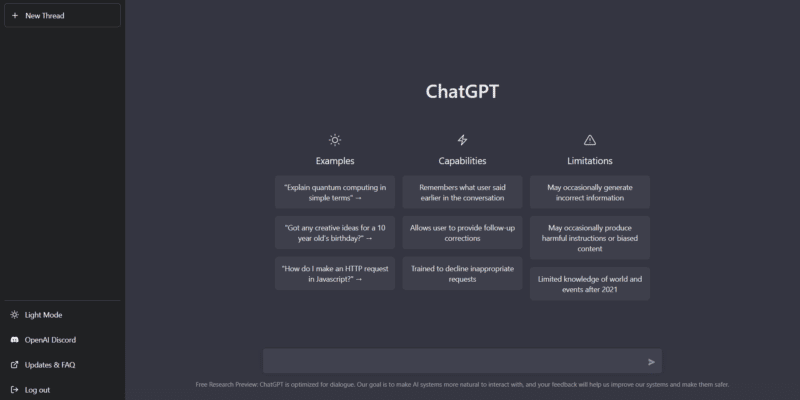ChatGPT is a freely available, artificial intelligence system, designed to answer questions and automated tasks. It learns from prior conversations and tasks set to improve future outcomes. In this post I am going to look at using ChatGPT to reduce teacher workload and help support students.
The service has the potential to have a huge impact on education, both positive and negative, and is very worth teaching staff and senior leaders being aware of. It has been gaining significant interest on EduTwitter since its launch November 30th 2022.
It can automate tasks including the creation of assessments, writing of model answers and even marking work from a provided mark scheme. Students can lookup key terms, ask for explanations suitable for different age ranges and plan out revision resources for given topics.
ChatGPT also however allows students to create work, which is not traceable via traditional plagiarism check tools and submit this as their own.
If schools wish, ChatGPT access can be integrated into your existing DB Education Portal. Below, I will take a look at some of the ways ChatGPT can be used to reduce teacher workload and benefit students.
Creating Multiple Choice Assessments Using ChatGPT
Staff are able to input a topic along with the number of questions required and the system will create a range of multiple choice questions and potential answers. You can provide a target age range or key stage to ensure questions are as appropriate as possible. The video below demonstrates how to create a small multiple choice assessment for a specific GCSE topic:
Generating Written Questions Using ChatGPT
Similarly, the AI can quickly create written questions for students from a provided topic. You can specify a number of questions, as I did in the video example below:
Creating Model Answers Using ChatGPT
Staff can also use ChatGPT to generate model answers to short or extended written answers. This also allows staff to create differentiated answers, suitable for different age groups.
This obviously comes with a significant issue, primarily that students can use the system to do the same! As an artificial intelligence system, no two answers will ever be the same, making plagiarism almost impossible to trace via the system.
In the video below I ask ChatGPT to write an essay style answer on a question around Of Mice and Men:
Define Complex Terms Using ChatGPT
ChatGPT can define complex terms in a wide range of complexities. This is exceptionally useful for creating say five or six differentiated versions of key definitions, suitable for students of different ability ranges.
Try asking ChatGPT “Can you explain that in simpler terms” as an example.
Plan and Create Revision Resources
Teachers can provide ChatGPT with a topic and ask it to plan out revision resources such as mind maps and flashcards. In the below example we look at planning out a mind map for Romeo and Juliet.
Marking Answers
ChatGPT can assist teachers with marking a wide range of answers. In this example, we look at marking a basic four mark question.
Marking Complex Answers From a Mark Scheme
In addition to the above, ChatGPT can learn from complex mark schemes to help mark extended answers such as essays. In the below example, I feed in a GCSE mark scheme for a COmputer Science essay question. I then feed in a student answers and receive detailed feedback
Potential Issues with ChatGPT in Education
ChatGPT has the potential to help revolutionise education in the coming years, both as a standalone system but also by feeding into third party applications such as Google Classroom through the API.
It does however come with a number of potential issues. The biggest concern for teachers and senior leaders will be the ease at which students can access ChatGPT (Microsoft and Google accounts provide instant access) and generate answers to questions. Elon Musk has already claimed ‘homework is a thing of the past’, and he may not be wrong! Students can generate answers in seconds, which are entirely unique and cannot be traced via traditional plagiarism check sites.
The accuracy of ChatGPT should also be a significant concern. In recording the above videos I asked ChatGPT to mark the same answer twice, having failed to hit record the first time! The first time the student was awarded two marks out of four, the next time they were awarded just one mark out of four.
ChatGPT is another system which can be integrated into the DB Education Portal, providing full single sign on accessor specified users. If you are interested in finding out more, please do get in touch!


